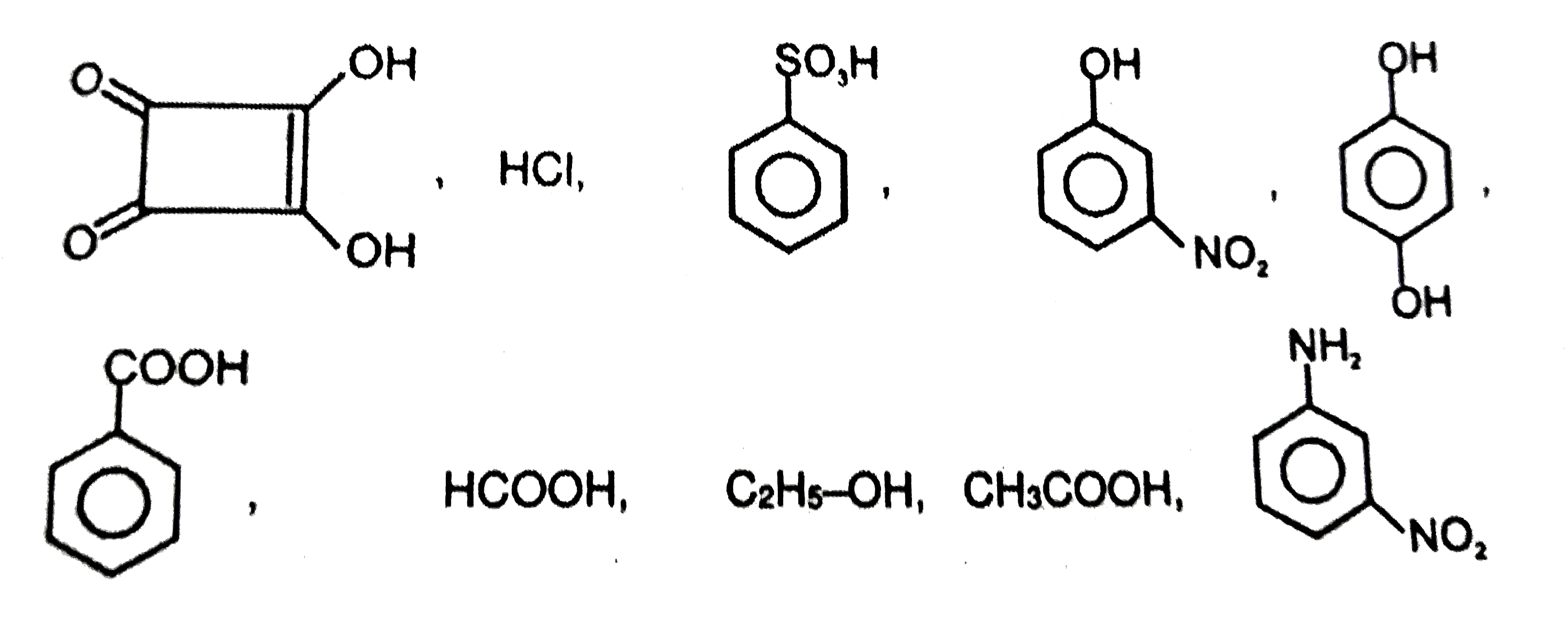How many of the following are Covalent network solids ?
S8, Bronze, SiO2, Diamond, ZnSO4, Si, AlN, SiC, CO2
The correct Answer is:5
To determine how many of the given substances are covalent network solids, we need to analyze each substance based on its bonding structure. Covalent network solids are characterized by a continuous network of covalent bonds, forming a giant structure.
1. Identify the substances: The substances given are: S8, Bronze, SiO2, Diamond, ZnSO4, Si, AlN, SiC, CO2.
2. Analyze each substance:
- S8: This is a molecular solid consisting of discrete S8 molecules. It does not form a continuous network. Not a covalent network solid.
- Bronze: An alloy primarily made of copper and tin. It has metallic bonding and does not form a covalent network. Not a covalent network solid.
- SiO2: Silicon dioxide forms a three-dimensional network of silicon and oxygen atoms bonded covalently. Covalent network solid.
- Diamond: A form of carbon where each carbon atom is bonded to four other carbon atoms in a three-dimensional network. Covalent network solid.
- ZnSO4: Zinc sulfate is an ionic compound composed of zinc ions and sulfate ions. Not a covalent network solid.
- Si: Silicon forms a covalent network solid where silicon atoms are bonded in a continuous network. Covalent network solid.
- AlN (Aluminum Nitride): This compound has a covalent network structure where aluminum and nitrogen atoms are bonded in a continuous network. Covalent network solid.
- SiC (Silicon Carbide): This compound also has a covalent network structure with silicon and carbon atoms bonded in a continuous network. Covalent network solid.
- CO2: Carbon dioxide consists of discrete molecules (linear arrangement of carbon and oxygen) and does not form a continuous network. Not a covalent network solid.
3. Count the covalent network solids: From the analysis, the covalent network solids identified are:
- SiO2
- Diamond
- Si
- AlN
- SiC
Thus, there are a total of 5 covalent network solids.
Final Answer:
There are 5 covalent network solids among the given substances.
---
- S8: This is a molecular solid consisting of discrete S8 molecules. It does not form a continuous network. Not a covalent network solid.
- Bronze: An alloy primarily made of copper and tin. It has metallic bonding and does not form a covalent network. Not a covalent network solid.
- SiO2: Silicon dioxide forms a three-dimensional network of silicon and oxygen atoms bonded covalently. Covalent network solid.
- Diamond: A form of carbon where each carbon atom is bonded to four other carbon atoms in a three-dimensional network. Covalent network solid.
- ZnSO4: Zinc sulfate is an ionic compound composed of zinc ions and sulfate ions. Not a covalent network solid.
- Si: Silicon forms a covalent network solid where silicon atoms are bonded in a continuous network. Covalent network solid.
- AlN (Aluminum Nitride): This compound has a covalent network structure where aluminum and nitrogen atoms are bonded in a continuous network. Covalent network solid.
- SiC (Silicon Carbide): This compound also has a covalent network structure with silicon and carbon atoms bonded in a continuous network. Covalent network solid.
- CO2: Carbon dioxide consists of discrete molecules (linear arrangement of carbon and oxygen) and does not form a continuous network. Not a covalent network solid.
- SiO2
- Diamond
- Si
- AlN
- SiC
There are 5 covalent network solids among the given substances.
Topper's Solved these Questions
- SOLID STATEBOOK - RESONANCE ENGLISHCHAPTER - SOLID STATEEXERCISE - Exercise -2 (Part-III)
12 Videos
- SOLID STATEBOOK - RESONANCE ENGLISHCHAPTER - SOLID STATEEXERCISE - Exercise -2 (Part-IV Comprehension)
8 Videos
- SOLID STATEBOOK - RESONANCE ENGLISHCHAPTER - SOLID STATEEXERCISE - Exercise -2 (Part-I)
19 Videos
- S BLOCK ELEMENTSBOOK - RESONANCE ENGLISHCHAPTER - S BLOCK ELEMENTSEXERCISE - ORGANIC CHEMISTRY(Biomolecules & Polymer)
4 Videos
- STRUCTURAL IDENTIFICATION & PRACTICAL ORGANIC CHEMISTRYBOOK - RESONANCE ENGLISHCHAPTER - STRUCTURAL IDENTIFICATION & PRACTICAL ORGANIC CHEMISTRYEXERCISE - Section -B
18 Videos
Similar Questions
Knowledge Check
How many electrons in an atom have the following quantum numbers?
n=4, ms=−1/2A32B18C8D16
Which of the following is a covalent solid ?
(i) AF3
(ii) Alcl3
(iii) MgCl2
(iv) BeCl2
View SolutionH2S can be dreid by how many of the following reagents? Anhydrous CaCl2 conc. H2SO4,P2O3,KOH solutons, Na2CO3 soluton.
View SolutionHow many of the following salts are yellow in colour?
Ag2CrO4,PbO2,Bi2S3,K4[Fe(CN)6],SnS2,CuO,
K3[Co(NO2)6],NaCrO2
View SolutionHow many of the following gases/vapours are colourless?
CO2,SO2,H2S,NO2,HCl,Br2,I2,CO,Cl2
View SolutionIn how many of the following reactions, colored precipitate is obtained?
(a). CuSO4+NaoH(excess)→, (b) CuCl2+NH3(excess)→ ltBrgt (c) ZnSO4+NaOH(excess)→
(d) ZnSO4+NH3(excess)→ , (e) FeSO4+NaOH(excess)in−−→air , (f) FeCl3+NaoH(Excess)→
(g) CuSO4+Kl(excess)→, (h) ZnSO4+NaHCO3→
(i) CuCl2+NaNO3→
View SolutionClassifiy the following into inoic, molecular, covalent and metallic crystals:
SiO2 (quartz), brass bronze, dry ice, nitre diamond, H2O (ice), SO2,I2CaO
View SolutionCentral atom may exhibit sp3 hybridisation in how many of the following species:
(a)CO2 , (b)Graphite , ( c)Diamond , (d)CO
(e)H3BO3(aq) , (f)Zeolites (Si-central) , (g)Silicones (Si)
(h)Chlorosilane (Si)
(i)Borax (Boron) , (j) Al2Cl6 , (k)B2H6 , (l)SiO2
(m)H2CO3 , (n)COCl2 , (o)CH4 , (p)CCl4
View Solution

